#Vergeltungswaffe
Photo

Préparation au lancement du missile balistique V2
19 notes
·
View notes
Text
Teen slut wants her virgin pussy be fuck
Julia Paes Tgata mostrando o rebolado
Hot indian girl getting horny during bath
Chupando la concha jugosa de gordita
Topless tart in tenerife flashes her pussy
Japan Girl Big Insertions
Caught Spying On His Step Moms Big Boobs
Desi indian guys fuckinf at home
Red Hair Girl Giant Dildo Masturbation
Latina gostosa mostrando seus peitos
#flower-embroidered#Yugo-Slav#transannular#exencephalia#Post-ordovician#thyreoadenitis#brineless#literatim#sharnbug#cankerflower#anteprohibition#pso2#oncetta#superaverageness#Ronda#chromatophore#zophorus#Vergeltungswaffe#isotropic#eroticomaniacal
0 notes
Photo

1944 Vergeltungswaffe V-2 - Jason Wong - box art Takom
17 notes
·
View notes
Text
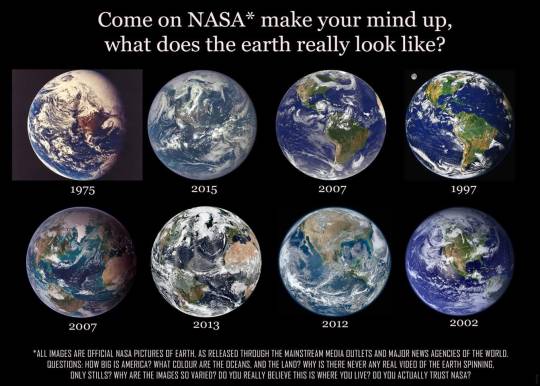
O Blue Marble e outras fotos compostas da Terra produzidas pela NASA - parte 1
Por Cláudio Tsuyoshi Suenaga
Poucos sabem que quase todas as fotografias divulgadas ao público pela NASA como sendo imagens totais da Terra vista do espaço, não passam de “composite images” (imagens compostas), confeccionadas com a colagem de muitas fotografias obtidas por satélites em órbita baixa de diferentes regiões do planeta. Ou seja, nenhuma das “fotos” é de fato uma foto, na acepção da palavra, como a própria NASA admite.
A primeira imagem de boa qualidade da Terra inteira foi tirada em 7 de dezembro de 1972 pela tripulação da Apollo 17 (Eugene Cernan, Ronald Evans e Harrison Schmitt), a sexta e última missão tripulada à Lua, quando se encontrava a caminho desta entre 29.000 e 32.000 quilômetros da Terra. A imagem de 1972, tirada cerca de 5 horas e 6 minutos após o lançamento da Apollo 17 e cerca de 1 hora e 54 minutos após a sonda deixar sua órbita estacionária ao redor da Terra, para iniciar sua trajetória até a Lua, se tornou icônica, uma das mais amplamente distribuídas da história da humanidade, e continua sendo a última mostrando a Terra como um todo tirada por astronautas no espaço.

A primeira imagem chamada “Blue Marble“ (“Bolinha de Gude Azul”), tirada pela tripulação da Apollo 17 em 1972. Foto: NASA.
A imagem é uma das poucas a mostrar um disco terrestre quase totalmente iluminado (ligeiramente giboso), pois os astronautas tinham o Sol atrás deles quando a imagem foi feita. Para os astronautas, a Terra tinha a aparência e o tamanho de uma “blue marble” (“bolinha de gude azul”), daí o nome.
Essa imagem icônica, no entanto, foi recortada e aprimorada a partir de três imagens originais tirada pela tripulação da Apollo 17, conforme se pode ver abaixo.

Foto: AS17-148-22725/NASA.

Foto: AS17-148-22726/NASA.

Foto AS17-148-22727/NASA.
Esta foi a primeira imagem chamada “Blue Marble”, embora houvessem imagens semelhantes tiradas antes, como a de 1967 pelo satélite ATS-3.

A primeira fotografia colorida da Terra inteira (hemisfério ocidental), tirada do satélite ATS-3 da NASA em 10 de novembro de 1967. Foto: NASA.
Fotos da Terra do espaço já haviam sido tiradas por foguetes na década de 1940 e satélites nas décadas de 1950 e 1960. No entanto, essas fotos capturaram apenas partes da Terra, em oposição a uma visão completa do planeta.
Em 1946, pouco depois do fim da Segunda Guerra Mundial e onze anos antes do Sputnik inaugurar a Era Espacial, cientistas como John T. Mengel (1918-2003), pioneiro da NASA que depois supervisionou o Programa Vanguard, começaram a experimentar foguetes V-2 (“Vergeltungswaffe 2”) alemães capturados. Mengel conduziu experimentos na atmosfera superior lançando os foguetes em órbita próxima à Terra. Ele projetou e fabricou a primeira concha de nariz para substituir a ogiva V-2 e começou a colocar câmeras, desenvolvidas pelo engenheiro Clyde Holliday, na concha de nariz.
Em 24 de outubro daquele ano, um grupo de soldados e cientistas no deserto do Novo México obtiveram as primeiras fotos da Terra em altitudes superiores a 105 quilômetros no espaço. As fotos granuladas em preto e branco foram tiradas por uma câmera cinematográfica de 35 mm montada em um míssil V-2 lançado na base de mísseis em White Sands.

Esta foto, tirada em 24 de outubro de 1946, foi a primeira imagem da Terra capturada do espaço, tirada por uma câmera de filme de 35 mm montada em um foguete V-2 que foi lançado do Campo de Mísseis White Sands do Exército dos EUA, no Novo México, a uma altitude superior a 105 quilômetros dentro do Programa Small Steps. Foto: White Sands Missile Range / Applied Physics Laboratory.
Mais de mil fotos da Terra, de altitudes de até 160 quilômetros, foram tiradas de V-2 dentro do Programa Small Steps entre 1946 e 1950. As fotos, geralmente mostrando grandes extensões do sudoeste norte-americano, apareceram nos jornais e foram examinadas por cientistas do Departamento de Meteorologia dos Estados Unidos.

Esta foto de 7 de março de 1947 inaugurou uma prática que se tornaria usual, o da composição, pois os quadros do filme tiveram que ser “costurados”. Foto: Johns Hopkins Applied Physics Laboratory.

Aqui é apresentado o mesmo conjunto de imagens, tornando o panorama completo. Fonte: Foto: White Sands Missile Range / Applied Physics Laboratory.
Antes de 1946, as únicas imagens da superfície da Terra eram as do balão tripulado Explorer 2, que subiu a 21 quilômetros de altitude em 11 de novembro de 1935, alto o suficiente para discernir a curvatura da Terra. Lançado às 4 horas da manhã de Rapid City, Dakota do Sul, o balão de pano de borracha inflado de hélio transportava uma tripulação de dois homens composta pelos capitães do Exército dos Estados Unidos Albert W. Stevens e Orvil A. Anderson, dentro de uma cabine esférica e selada. A tripulação pousou em segurança perto de White Lake, Dakota do Sul, às 16h13, e ambos foram aclamados heróis nacionais.
Os instrumentos científicos carregados na gôndola trouxeram informações úteis sobre a estratosfera. O recorde de altitude de voo tripulado estabelecido por essa missão financiada pelos membros da Sociedade Geográfica Nacional, permaneceu por 21 anos e só foi quebrado em 1956 pelo piloto capitão da Força Aérea Ivan Kincheloe ao voar com um Bell X2 a uma altitude de 126.465 metros.


Este balão da National Geographic Society – Army Air Corps, estabeleceu um recorde mundial de altitude de 22 km em 11 de novembro de 1935. Foto: US National Archives and Records Administration.

Esta fotografia tirada pelo Explorer 2 no pico da subida foi a primeira a mostrar a curvatura da Terra contra a escuridão do espaço, com um horizonte a mais de 480 quilômetros de distância. A curvatura pode ser percebida em relação a linha preta. Foto: US National Archives and Records Administration.
Em 5 de outubro de 1954, durante um lançamento no Novo México, uma câmera montada em um foguete Viking, desenvolvido a partir de 1946 pelo NRL (United States Naval Research Laboratory) e projetado e construído pela Glenn L. Martin Company, tirou a primeira foto de um furacão e uma tempestade tropical de altitudes de até 160 quilômetros. A imagem abrangeu uma área com mais de 1.600 quilômetros, incluindo o México e as áreas do Texas e Iowa. Essa também foi a primeira imagem em cores naturais da Terra. O sucesso alcançado pelo NRL nesta série de experimentos, o primeiro a medir temperatura, pressão e ventos na atmosfera superior e a densidade de elétrons na ionosfera, bem como a registrar os espectros ultravioletas do Sol, encorajou os cientistas do Laboratório a acreditar que, com um motor mais potente e a adição de estágios superiores, o foguete Viking poderia ser transformado em veículo capaz de lançar um satélite terrestre.

A imagem da Terra obtida pela Viking 11 em 1954. Foto: Smithsonian Magazine.
Em 1º de abril de 1960, bem no Dia da Mentira, o TIROS-1 tornou-se o primeiro satélite meteorológico de órbita terrestre baixa bem sucedido, bem como o primeiro desse gênero a tirar uma foto da Terra, fornecendo novas informações sobre sistemas de nuvens, incluindo formações espirais associadas a grandes tempestades. Lançado pela NASA e outros parceiros em um foguete Thor-Able a partir da Estação da Força Aérea do Cabo Canaveral, o TIROS-1 também foi o primeiro de uma série chamada de Television Infrared Observation Satellites.

Em 1º de abril de 1960, o TIROS-1 tirou esta foto da Terra com seus sistemas de nuvens. Foto: NASA.
Em 23 de agosto de 1966, o Lunar Orbiter 1 da NASA tirou a primeira foto da Terra da órbita da Lua. A sonda foi projetada para fotografar a superfície lunar de modo a que se escolhesse locais seguros para os pousos das sondas Surveyor e das missões do Programa Apollo. Foi também projetada para recolher amostras de radiação, intensidade e impactos de micrometeoritos. A Lunar Orbiter 1 foi lançada em 10 de agosto de 1966 de Cabo Canaveral para uma missão que durou 80 dias.
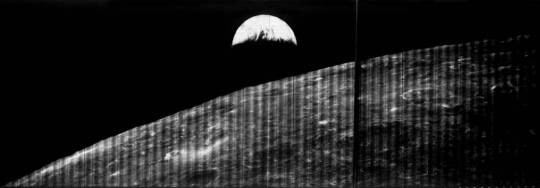
A primeira foto da Terra da órbita da Lua, tirada em 23 de agosto de 1966 pela sonda Lunar Orbiter 1 da NASA. Fonte: NASA.
A primeira foto colorida e em alta resolução do nascer da Terra (Earthrise) na Lua foi tirada pelo astronauta William Anders (1933-) em 24 de dezembro de 1968 durante a missão Apollo 8. Nela, a Terra surge parcialmente na sombra, vendo-se em primeiro plano a superfície lunar. Chamada justamente de Earthrise, esta foto (AS8-14-2383HR) foi considerada uma das mais influentes já tiradas, tanto que em 2003 a revista Life listou-a entre as 10 Fotografias que Mudaram o Mundo.
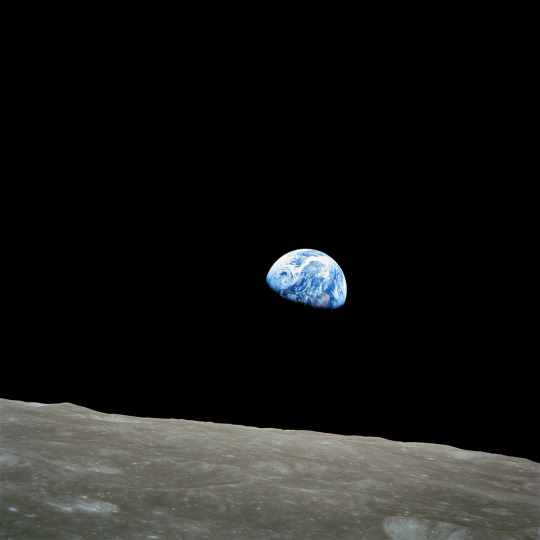
O nascer da Terra visto da Lua em foto tirada pela Apollo 8. Foto: NASA.
Uma imagem ainda mais icônica do que a do Blue Marble de 1972, de cores mais vivas, foi divulgada pela NASA em 2002. O “Blue Marble 2", vamos chamá-lo assim, é tão familiar para nós em parte porque era a imagem padrão do primeiro iPhone.

O Blue Marble 2 de 2002. Fonte: NASA's Earth Observatory.
O que o tornou ainda mais interessante para nós, é que alguns conspiracionistas de olhos aguçados descobriram nele “anomalias”, especificamente nuvens duplicadas, o que levou a acusações de que não apenas a imagem do Blue Marble 2 é falsa, mas também de que a imagem original da Apollo 17 (Blue Marble 1) também é falsa. Isso, por sua vez, levou alguns a questionar se tudo o que a NASA fez e faz é falso.

A NASA explica assim o Blue Marble 2: “Esta imagem espetacular de ‘Blue Marble’ é a imagem em cores verdadeiras mais detalhada de toda a Terra até hoje. Usando uma coleção de observações por satélite, cientistas e visualizadores juntaram meses de observações da superfície terrestre, oceanos, gelo marinho e nuvens em um mosaico sem costura e de cores reais de cada quilômetro quadrado (386 milhas quadradas) do nosso planeta. Essas imagens estão disponíveis gratuitamente para educadores, cientistas, museus e público. Muitas das informações contidas nesta imagem vieram de um único dispositivo de sensoriamento remoto – espectroradiômetro de imagem com resolução moderada da NASA, ou MODIS (Moderate Resolution Imaging Spectroradiometer). Voando a mais de 700 km acima da Terra a bordo do satélite Terra, o MODIS fornece uma ferramenta integrada para observar uma variedade de características terrestres, oceânicas e atmosféricas da Terra. As partes terrestres e costeiras dessas imagens são baseadas em observações da superfície coletadas de junho a setembro de 2001 e combinadas ou compostas a cada oito dias para compensar as nuvens que podem bloquear a visão da superfície do sensor em um único dia… A imagem da nuvem é composta de dois dias de imagens coletadas em comprimentos de onda de luz visível e um terceiro dia de imagens de infravermelho térmico sobre os polos. As luzes globais da cidade, derivadas de 9 meses de observações do Programa de Satélite Meteorológico da Defesa, são sobrepostas a um mapa escuro da superfície terrestre. A NASA criou essa imagem para exibir compostos globais de alta resolução do MODIS. Os dados da superfície terrestre foram adquiridos de junho a setembro de 2001. As nuvens foram adquiridas em dois dias separados – 29 de julho de 2001, no hemisfério norte, e 16 de novembro de 2001, no hemisfério sul. As imagens foram renderizadas em Electric Image e compostas no Adobe Photoshop no final de janeiro de 2002.”
Em outras palavras, a NASA está dizendo que o Blue Marble 2 não é uma foto. Em vez disso, a imagem é uma combinação composta de muitas “observações baseadas em satélite” (o que quer que isso signifique), que foram “costuradas” (o que quer que isso signifique) por cientistas e “visualizadores” (o que isso significa?).
Em outras palavras, o Blue Marble 2 é uma farsa – o que explicaria as nuvens duplicadas.
Aqui está uma admissão de Robert Simmon, um dos “visualizadores” que “costuraram” o Blue Marble 2, conforme relatado por David Yanofsky em seu artigo (“The guy who created the iPhone’s Earth image explains why he needed to fake it”) de 28 de março de 2014 para a Quartz: “O cara que criou a imagem do iPhone na Terra explica por que ele precisava fingir: Como se vê, muito do que se pode assumir sobre essa bela imagem não é verdade… Na verdade, não é uma fotografia da Terra. E aquela escuridão ao seu redor? Também não é o espaço. Simmon, visualizador de dados e designer do Earth Observatory da NASA, criou a imagem em 2002. Ele disse ao Quartz que não é uma fotografia, mas uma visualização sofisticada. Imagens da Terra podem parecer comuns, mas na verdade existem muito poucas imagens de todo o planeta. Simmon disse que o problema é que todos os satélites de observação da Terra da NASA estão em órbita baixa ou geoestacionária, o que significa que nenhum deles está longe o suficiente para ver um hemisfério completo. As imagens mais familiares de toda a Terra são das missões Apollo das décadas de 1960 e 1970 até a Lua. Tão realista quanto parece, a imagem é um composto de quatro meses de dados de luz coletados em bandas de 2.300 km (1.429 milhas) de largura, enquanto o satélite Terra da NASA orbita de polo a polo e a Terra gira sob ele. Esses dados foram então unidos e aplicados à superfície de uma bola digital e modificados no Photoshop. Simmon admite prontamente que existem inúmeras falsificações em sua imagem. A atmosfera é borrão do Photoshop. Algumas das nuvens são agrupadas usando a ferramenta clone do Photoshop para cobrir lacunas na cobertura do satélite. A área negra ao redor da terra não é o vazio do espaço. É simplesmente um fundo de cor preta em que Simmon colocou a Terra em cima. (Essa é uma prática comum, diz Simmon: a maioria das ‘fotografias’ reais da Terra – incluindo as imagens da Apollo – apresenta o planeta em um fundo preto). Simmon disse que baseou suas manipulações na realidade, ‘no sentido de que eu observei muitas imagens para ver quão espessa deveria ser, quão azul deveria ser.’ Mas, mais tarde, ele acrescentou: ‘É mais hiper-realista do que realista. Sem essas alterações, a imagem não seria muito parecida com a Terra.’ "
Dada a admissão de que o Blue Marble 2 é uma farsa, temos todos os motivos para pensar em outras mentiras e mentiras da NASA. E uma vez que todas as nossas imagens visuais da Terra vieram da NASA, pois nenhum de nós voou para o espaço para realmente ver a Terra inteira, o fato é que não sabemos de fato como a Terra é.
Em prosseguimento às suas mentiras, em 25 de janeiro de 2012 a NASA divulgou o que chamou de “a mais incrível imagem em alta definição da Terra”, tirada pelo satélite climático Suomi NPP em 4 de janeiro. Tratou-se na verdade de outra composição ou montagem a partir de fotografias digitalizadas tiradas pelo instrumento Visible Infrared Imaging Radiometer Suite (VIIRS) a bordo do satélite Suomi NPP, lançado em outubro de 2011 e renomeado em homenagem a Verner Edward Suomi (1915-1995), considerado o pai da meteorologia por satélite.
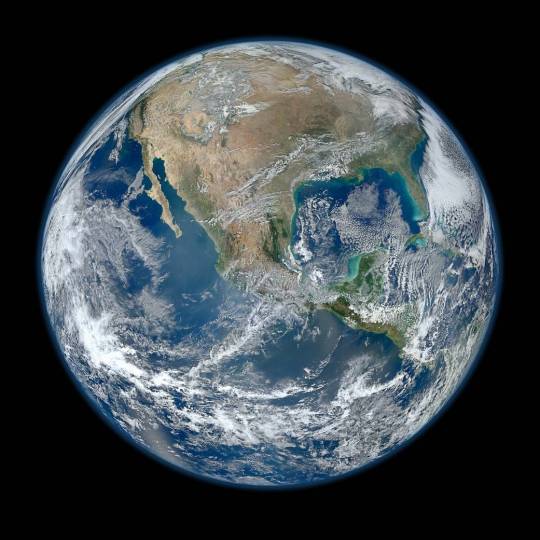
A Blue Marble 2012. Foto: NASA/NOAA/GSFC/Suomi NPP/VIIRS/Norman Kuring.
Sob luz visível e muitos comprimentos de onda invisíveis, a NASA alega que ela e seus parceiros “científicos” estão observando o planeta inteiro todos os dias… A imagem abaixo foi capturada em 30 de março de 2014 pelo VIIRS do satélite Suomi NPP. A imagem composta do hemisfério oriental foi compilada a partir de oito órbitas do satélite e de dez canais de imagem, e depois unidas para mesclar as bordas de cada passagem do satélite. Mudanças sutis na cobertura de neve e vegetação disputam a atenção com uma camada dinâmica de nuvens que está constantemente presente e constantemente em movimento.
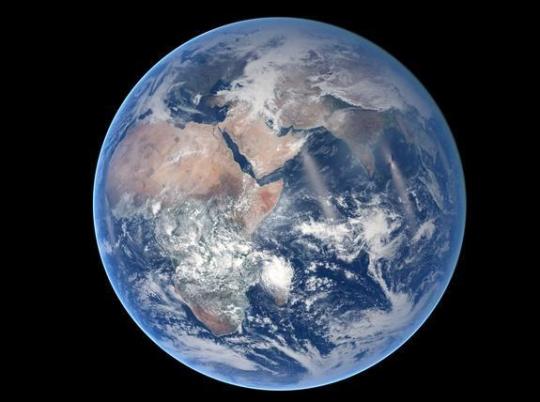
O hemisfério oriental da Terra aparece nesta imagem de 30 de março de 2014 tirada por um instrumento a bordo do satélite Suomi NPP. fnte: Imagem do NASA Earth Observatory por Robert Simmon, usando imagens Suomi NPP VIIRS do Laboratório de Visualização Ambiental da NOAA. Fonte: NASA.
Em 8 de janeiro de 2015, o Himawari 8, um satélite de comunicação e meteorológico geoestacionário japonês construído pela Mitsubishi Electric, operado pelo Ministério de Terras, Infraestrutura, Transporte e Turismo (MLIT) e pela Agência Meteorológica do Japão (JMA), lançado em 7 de outubro de 2014 a partir do Centro Espacial de Tanegashima, revelou em suas fotos tiradas a uma altitude de 35.790 quilômetros, que a Terra, sem Photoshop, é cinzenta, e não azulada.
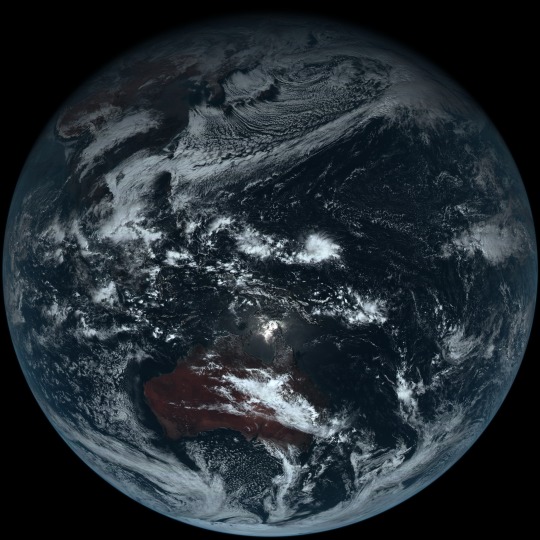
A Terra “cinzenta” fotografada pelo satélite japonês Himawari 8 em 8 de janeiro de 2015. Fonte: The Japan Meteorological Agency.
Em 20 de julho de 2015, a NASA divulgou outra imagem em alta resolução da Terra, alegadamente obtida de uma distância de 1 milhão de quilômetros pelo satélite Deep Space Climate Observatory (DSCOVR) em 6 de julho. A imagem não é uma fotografia propriamente, como seria de esperar, mas outro mero compósito gerado por computador pela combinação de várias fotos tiradas pelo Earth Polychromatic Imaging Camera (EPIC), ou Câmera de Imagem Policromática da Terra, uma câmera CCD de quatro megapixels.
A Blue Marble de 2015 mostra claramente algumas nuvens formando a palavra SEX. A possibilidade de as nuvens estarem alinhadas coincidentemente a ponto de formar esta palavra é altamente improvável, lembrando também das mensagens subliminares que podem ser vistas em filmes da Disney como o Rei Leão, onde coincidentemente as nuvens também formam a palavra SEX durante uma cena.
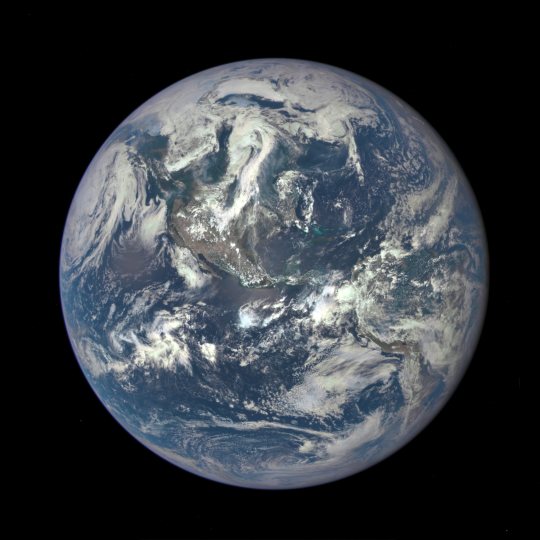
A Blue Marble 2015. Fonte: NASA.
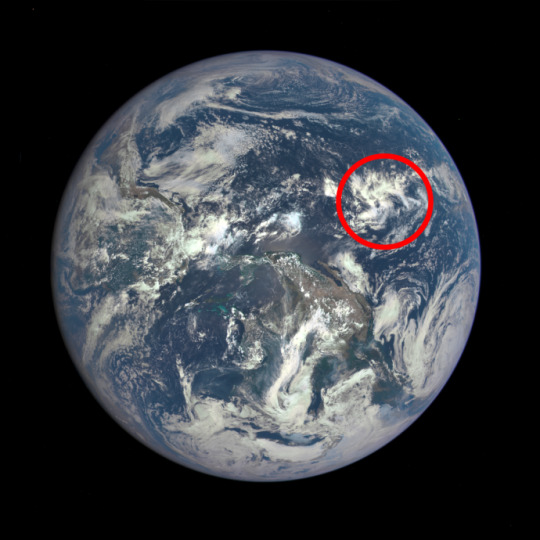
A explicação oficial dos “teóricos da coincidência” é a de que a palavra SEX é apenas uma formação de nuvens que ocorre naturalmente, assim como palavras claramente formadas, abrangendo centenas de quilômetros, se materializam aleatoriamente o tempo todo sobre nossas cabeças. Fonte: NASA.
Continua na parte 2.
4 notes
·
View notes
Text

Ukrainian Air Force reveals how its pilots manage to shoot down Russian missiles in flight
Ukrainian Air Force pilots sometimes manage to intercept Russian cruise missiles in the air.
Fernando Valduga By Fernando Valduga 06/21/2022 - 12:00 PM in Military, War Zones
The official publication of the Ministry of Defense [of Ukraine] recently reported that its military pilots are shooting down Russian cruise missiles in flight.
The ministry gave an example of Russian cruise missiles launched from the Caspian Sea. Its launch (usually from strategic bombers of the Russian Federation) is recorded and the direction of the flight is determined, which results in the activation of air attack sirens simultaneously in many regions of Ukraine.
“For the pilots of one of the brigades of the [Ukrainian] Air Force, this launch means a flight to intercept [the invader's missile]. The next shift was at one of the operational aerodromes. Listening to the command, the pilots take off in pairs.
The hunting radar station is immediately turned on. There are two of them on the plane: one is a radar sight complex that responds to objects, the other is an optically located quantum station that responds to a thermal signal."

The Ukrainian Air Force explains that its jets are armed with missiles with semi-active search warheads, which are significantly weaker in their characteristics than modern NATO counterparts and the missiles that the Russian occupants have.
Since the cruise missiles of the invaders usually fly at a very low altitude and have a small reflective surface, it is extremely difficult to detect them only with radar, especially against the ground.
But since the Calibre, X-101, X-59 and X-555 missiles are equipped with conventional two-circuit jet engines, they leave a heat mark in the air, say representatives of the Ukrainian Air Force.
The pilot can see this heat mark with the help of a quantum optical location station and attack with air-to-air missiles.

Kh-555 air-launched cruise missile is launched by a Tupolev Tu-160 supersonic strategic bomber of the Russian Aerospace Forces.
Since the beginning of the large-scale war, Russian air and space forces have attacked Ukrainian facilities with X-555 and X-101 missiles (its launch range is 2,000 km and 5,500 km of Tu-95MS and Tu-160 strategic aircraft).
But your reserves of these expensive missiles began to run out. Its use in strategic aircraft is also expensive. Therefore, since the beginning of April, the Russians have begun to use X-59MK2 cruise missiles from operational and tactical aircraft.

According to the training officer, Ukrainian pilots were trained, informed and shown in simulators what to consider when intercepting cruise missiles at the beginning of the war. The results did not take long to arrive - in just a few days, Ukrainian pilots managed to intercept one and destroy it.
"In June 1944, the Nazis began bombing London and other British cities with V-1 missiles (Vergeltungswaffe Eins). Then, for the first time, the Royal Air Force fighter pilots began to destroy them in the air," the statement said.
Yurii Ihnat, the spokesman for the Air Forces of the Armed Forces of Ukraine, explained in a briefing on June 14 that in Ukraine an air defense system (not anti-missiles) was implemented. It should hit the aggressors' planes and helicopters, but it is not always effective against Russian missiles.
Source: Army Inform
Tags: Military AviationUkrainian Air ForceWar Zones - Russia/Ukraine
Fernando Valduga
Fernando Valduga
Aviation photographer and pilot since 1992, he has participated in several events and air operations, such as Cruzex, AirVenture, Dayton Airshow and FIDAE. He has works published in a specialized aviation magazine in Brazil and abroad. He uses Canon equipment during his photographic work in the world of aviation.
HOME Main Page Editorials Information Events Collaborate SPECIALS Advertise About
Cavok Brasil - Digital Tchê Web Creation
Commercial
Executive
Helicopters
History
Military
Brazilian Air Force
Space
SPECIALS
Cavok Brasil - Digital Tchê Web Creation
5 notes
·
View notes
Text



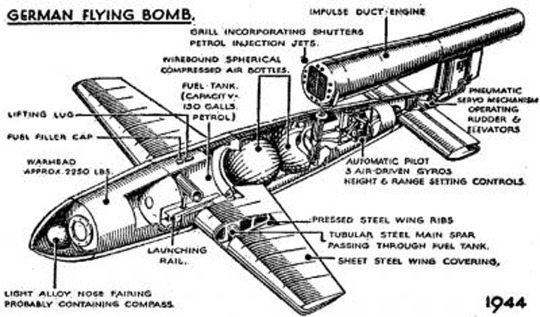
V-1 flying bomb
Fieseler Fi 103 - referred to as the Vergeltungswaffe 1 or Vengeance Weapon 1
Warhead: 850 kg of Amatol-39
Engine: Argus As 109-014 Pulsejet
Range: 250 km Speed: 640 km/h
1 note
·
View note
Text
Why were V-1 rockets not launched from submarines or airplanes by the Germans, and why were they not built with a guidance system?
The V-1 rockets, also known as Vergeltungswaffe 1 or “Vengeance Weapon 1,” were a type of unmanned, guided flying bomb developed by Nazi Germany during World War II. They were primarily launched from fixed land-based ramps or aircraft-like structures called “ski sites” and were not launched from submarines or airplanes for several reasons:
Technological limitations: The V-1 rocket was a…
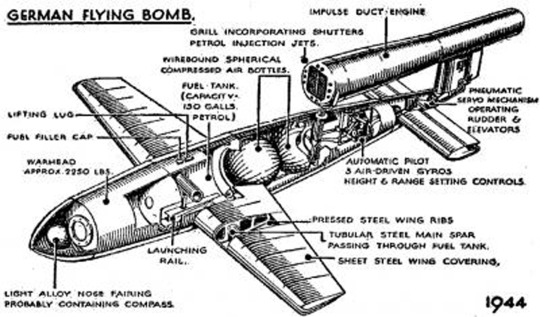
View On WordPress
0 notes
Text


German V1 Flying Bomb - WWII
The V-1 flying bomb (German: Vergeltungswaffe 1 "Vengeance Weapon 1") was an early cruise missile. Its official Reich Aviation Ministry (RLM) designation was Fi 103. It was also known to the Allies as the buzz bombor doodlebug and in Germany as Kirschkern (cherry stone) or Maikäfer (maybug).
The V-1 was the first of the Vergeltungswaffen (V-weapons) deployed for the terror bombing of London. It was developed at Peenemünde Army Research Center in 1939 by the Luftwaffe at the beginning of the Second World War, and during initial development was known by the codename "Cherry Stone". Because of its limited range, the thousands of V-1 missiles launched into England were fired from launch facilities along the French (Pas-de-Calais) and Dutch coasts.
The Wehrmacht first launched the V-1s against London on 13 June 1944, one week after (and prompted by) the successful Allied landings in France. At peak, more than one hundred V-1s a day were fired at southeast England, 9,521 in total, decreasing in number as sites were overrun until October 1944, when the last V-1 site in range of Britain was overrun by Allied forces. After this, the Germans directed V-1s at the port of Antwerp and at other targets in Belgium, launching a further 2,448 V-1s. The attacks stopped only a month before the war in Europe ended, when the last launch site in the Low Countries was overrun on 29 March 1945. V1's could not be targeted to a specific destination, it was only once that ran out of fuel that they fell out of the sky and onto whatever lay beneath them, so they were a totally indiscriminate weapon (V = Vengeance Weapon)
As part of operations against the V-1, the British operated an arrangement of air defences, including anti-aircraft guns, barrage balloons, and fighter aircraft, to intercept the bombs and tip them off course with their wings or destroy them before they reached their targets, while the launch sites and underground storage depots became targets for Allied attacks including strategic bombing.
10 notes
·
View notes
Photo

Civilians searching through wreckage of a building in London, January 1945. Although not specified, the destruction was probably caused by a V1 flying bomb or V2 rocket. The very first ‘V1’ rocket to hit London, was launched from European soil on 13th June 1944 and hit a railway bridge in Grove Road-Bow-East London, killing 6 people and badly injuring 42 others – all in all, 9,000 V1 rockets were launched on London. Around 1,500 V2 rockets - the V stood for Vergeltungswaffe, or Vengeance Weapon - were fired at London and the south east of England, in what was seen as Hitler's last throw of the dice. The V2 was a ballistic missile, launched with a 65 second burst from its engine that sent the rocket and 2,000lb warhead in a parabolic curve reaching fifty to sixty miles above the earth before plunging silently down on its target. The first V2 launched against Britain landed in Chiswick, destroying a large part of Staveley Road, killing three and wounding 17. #secondworldwar #ww2 #worldwartwo #worldwar2 #war #history #militaryhistory #military #colourised #colorized #colourisedhistory #colorizedhistory #color #colour #colorizedhistoricalphotos #colorization #colourisation #retro #goodolddays #classic #goldenoldies #colorizedphoto #colourisedphoto #v1 #v2 #1945 Toni Frissell https://www.instagram.com/p/CiNknbbKicc/?igshid=NGJjMDIxMWI=
#secondworldwar#ww2#worldwartwo#worldwar2#war#history#militaryhistory#military#colourised#colorized#colourisedhistory#colorizedhistory#color#colour#colorizedhistoricalphotos#colorization#colourisation#retro#goodolddays#classic#goldenoldies#colorizedphoto#colourisedphoto#v1#v2#1945
0 notes
Photo

Study of the V2 rocket as the vengeance of Achilles, or a playing card . #MindlessPleasures #52, 12” x 9”, #mixedmedia on #paper. #art #contemporaryart #abstractart #abstractpainting #drawing #contemporarypainting #textart #vergeltungswaffe https://www.instagram.com/p/CEPLfJ9F3ut/?igshid=14umptzfgbupm
#mindlesspleasures#52#mixedmedia#paper#art#contemporaryart#abstractart#abstractpainting#drawing#contemporarypainting#textart#vergeltungswaffe
3 notes
·
View notes
Photo
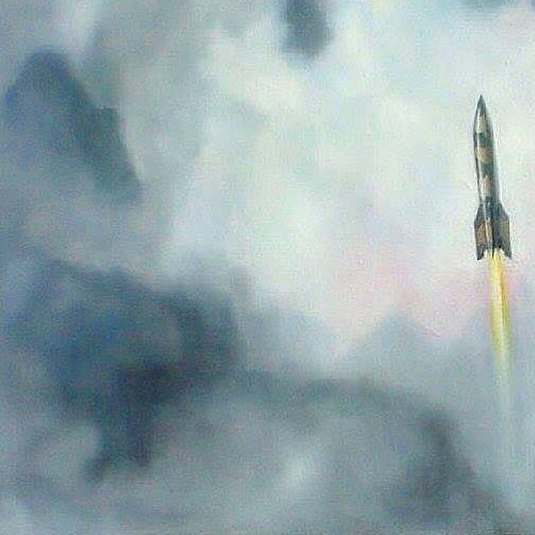
V2, Oil on Canvas, 2008. #v2 #vergeltungswaffe #aggregat4 #ballisticmissile #technology #innovation #aviation #spaceprogram #revenge #terrorweapon #slavelabor #atrocity #industrialslaughter #operationpaperclip #wernervonbraun #peenemünde #oiloncanvas #oilpainting #oilpaint #painting #peinture #pintura #malerei #art #illustration (at Peenemünde) https://www.instagram.com/p/BycwzzLJjGB/?igshid=borzm0yh8rez
#v2#vergeltungswaffe#aggregat4#ballisticmissile#technology#innovation#aviation#spaceprogram#revenge#terrorweapon#slavelabor#atrocity#industrialslaughter#operationpaperclip#wernervonbraun#peenemünde#oiloncanvas#oilpainting#oilpaint#painting#peinture#pintura#malerei#art#illustration
0 notes
Photo

Le Fieseler Fi 103 (V1), premier missile de croisière sol-sol/air-sol de l'aéronautique.
#WWII#Arme de représailles#Vergeltungswaffe#Missile#Missile de croisière#Cruise missile#Fieseler Fi 103#V1
5 notes
·
View notes
Video
Bumper V-2 Launch
(July 24, 1950) A new chapter in space flight began in July 1950 with the launch of the first rocket from Cape Canaveral, Florida: the Bumper 8. Shown above, Bumper 8 was an ambitious two-stage rocket program that topped a V-2 missile base with a WAC Corporal rocket. Or in other words, it was a German V2 Rocket just without the warhead but with measurement equipment instead, e.g., a photo camera (which made the first picture of the Earth from space in history of humankind). The upper stage was able to reach then-record altitudes of almost 400 kilometers, higher than even modern Space Shuttles fly today. Launched under the direction of the General Electric Company, Bumper 8 was used primarily for testing rocket systems and for research on the upper atmosphere . Bumper rockets carried small payloads that allowed them to measure attributes including air temperature and cosmic ray impacts. Seven years later, the Soviet Union launched Sputnik I and Sputnik II, the first satellites into Earth orbit. In response, in 1958, the US created NASA . *Image Credit*: NASA Image Number: 66P-0631
#V2#rocket#NASA#space#WWII#bumper#Aviation#Aerospace#Spaceflight#National Aeronautics and Space Administration#Jet Propulsion Laboratory#JPL#Mittelwerk#A-4 Rocket#A-4 Missile#Vergeltungswaffe 2#V-2 Missile#V-2 Rocket#Douglas Aircraft Company#General Electric#GE#Douglas Aircraft#DAC#Guggenheim Aeronautical Laboratory#WAC#WAC Corporal#Bumper-WAC#Cape Canaveral#Rocket Launch#General Electric RTV-G-4 Bumper
54 notes
·
View notes
Text
I love how any modern depiction of a generic rocket 🚀 looks like this





To the point both Tin Tin and Futurama used it for their respective iconic spacecraft


And it’s all because of Germany and their WW2-era Vergeltungswaffe 2 (V-2) ballistic rocket.
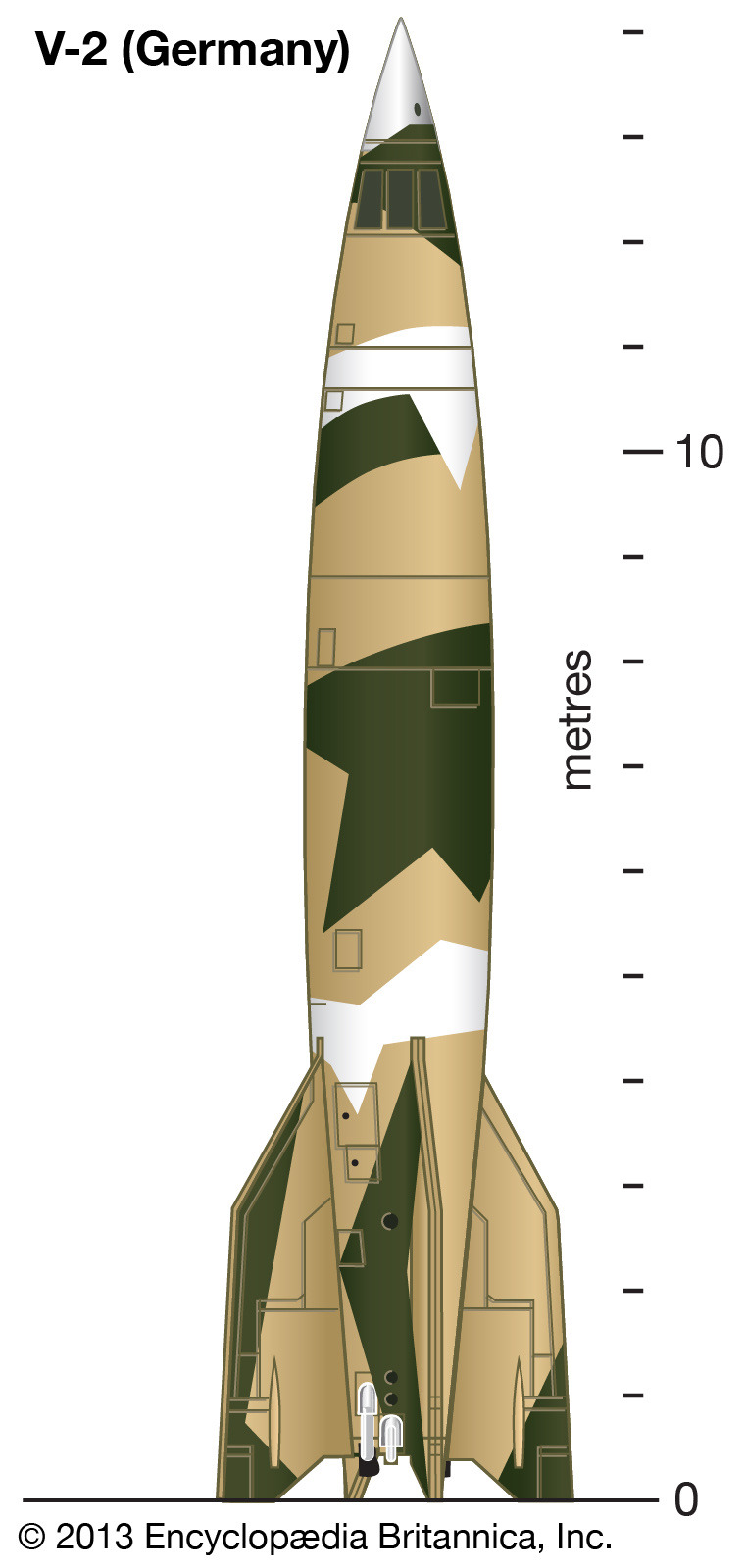
Germans man, it always comes back to them.
119 notes
·
View notes
Text

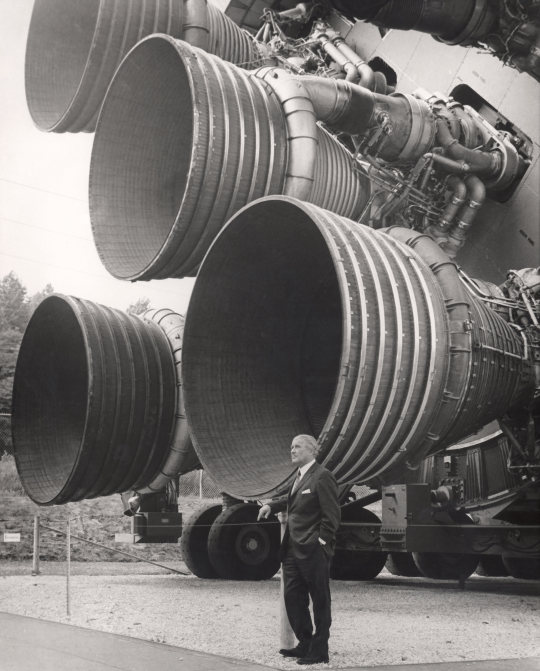
Left: First photo of Earth from space - photographed from a V-2 rocket Oct 24, 1946
Right: Wernher von Braun in front of the Saturn V
"The V-2 (German: Vergeltungswaffe 2, "Retribution Weapon 2"), with the technical name Aggregat 4 (A4), was the world's first long-range guided ballistic missile. The missile, powered by a liquid-propellant rocket engine, was developed during the Second World War in Germany as a "vengeance weapon" and assigned to attack Allied cities as retaliation for the Allied bombings against German cities. The V-2 rocket also became the first artificial object to travel into space by crossing the Kármán line with the vertical launch of MW 18014 on 20 June 1944.
Wernher Magnus Maximilian Freiherr von Braun (23 March 1912 – 16 June 1977) was a German-American aerospace engineer and space architect. He was the leading figure in the development of rocket technology in Nazi Germany and a pioneer of rocket and space technology in the United States. While in his twenties and early thirties, von Braun worked in Nazi Germany's rocket development program. He helped design and co-developed the V-2 rocket at Peenemünde during World War II.
As described by Ernst Stuhlinger and Frederick I. Ordway III: "Throughout his younger years, von Braun did not show signs of religious devotion, or even an interest in things related to the church or to biblical teachings. In fact, he was known to his friends as a 'merry Heathen' (fröhlicher Heide)."
MW 18014 was a German A-4/V-2 rocket test launch that took place on 20 June 1944, at the Peenemünde Army Research Center in Peenemünde. It was the first man-made object to reach outer space, attaining an apogee of 176 kilometers, which is well above the Kármán line.
This particular altitude was not considered significant at the time; the Peenemünde rocket scientists rather celebrated the V-2 launch in October 1942, first to reach the thermosphere."
...
As teenagers in the 1920s, a time when space travel was limited to science fiction novels, Wernher von Braun in Germany and Jack Parsons (one of the pioneers of rockets in the USA and also a Pagan) in Pasadena, CA shared an intercontinental rocket science correspondence. Talking for hours on the phone, they exchanged ideas, tips, and notes from experiments on everything from explosions to home-engineered rocket fuel tests. Into adulthood, they went on separate paths."
-taken from wikipedia, WalterSienna, & hafny
https://paganimagevault.blogspot.com/2022/01/first-photo-of-earth-from-space.html
#science#astronomy#space#outer space#inventions#groundbreaking#pagan#paganism#german#europe#heathen#germany#inventors#history#earth#1900s#rocket#wernher von braun#united states
36 notes
·
View notes
Text
Stuart Banham Following
📌 V1 Flying Bomb (Vergeltungswaffe 1 "Vengeance Weapon 1") IWM Duxford.
The V-1 Flying Bomb (German: Vergeltungswaffe 1 ''Vengeance Weapon'') was an early 'Cruise Missile and the only production Aircraft to use a Pulsejet for power. Its official RLM Aircraft designation was Fi 103, and was also known to the Allies as the ''Buzz Bomb'' or ''Doodlebug'' and in Germany as ''Kirschkern'' (''Cherry Stone'') ''Maikäfer'' (''Maybug'').
The V-1 was the first of the so-called ''Vengeance Weapons'' Series (V-Weapons or Vergeltungswaffen) deployed for the 'Terror Bombing' of London. It was developed at Peenemünde Army Research Center in 1939 by the Nazi German Luftwaffe at the beginning of World War Two, and during initial development was known by the codename ''Cherry Stone'' because of its limited range, the thousands of V-1 Missiles launched into England were fired from launch facilities along the French (Pas-de-Calais) and Dutch coasts.
The Wehrmacht first launched the V-1's against London on 13th June 1944, one week after (and prompted by) the successful Allied Landings in France. At peak, more than one hundred V-1's a day were fired at southeast England, 9,521 in total, decreasing in number as sites were overrun until October 1944, when the last V-1 site in range of Britain was overrun by Allied Forces. After this, the German's directed V-1's at the port of Antwerp and at other targets in Belgium, launching a further 2,448 V-1's. The Attacks stopped only a month before the War in Europe ended, when the last launch site in the Low Countries was overrun on 29th March 1945.
As part of Operations against the V-1, the British operated an arrangement of Air Defences, including Anti-Aircraft Guns, Barrage Balloons, and Fighter Aircraft, to intercept the V-1 Bombs before they reached their targets, while the Launch Sites and Underground Storage Depots became targets for Allied Attacks including Strategic Bombing.
In 1944, a number of tests of the V-1 Weapon were conducted in Tornio, Finland, according to multiple Soldiers, a small ''Plane''-Like Bomb with wings fell off a German Aeroplane. Another V-1 was launched which flew over the Finnish Soldiers' Lines. The second Bomb suddenly stopped its Engine and fell steeply down, exploding and leaving a crater around 65ft to 98ft wide. The V-1 Flying Bomb was referred by Finnish soldiers as a ''Flying Torpedo'' due to its resemblance to one from afar.
The first complete V-1 Airframe was delivered on 30th August 1942,after the first complete As.109-014 was delivered in September, the first glide test flight was on 28th October 1942 at Peenemünde, from under a Focke-Wulf Fw 200. The first powered trial was on 10th December, launched from beneath a Heinkel He 111. The LXV Armeekorps z.b.V. (65th Army Corps for Special Deployment) formed during the last days of November 1943 in France commanded by General der Artillerie z.V. Erich Heinemann was responsible for the operational use of V-1.
The conventional Launch Sites could theoretically launch about 15 V-1's per day, but this rate was difficult to achieve on a consistent basis, the maximum rate achieved was 18. Overall, only about 25% of the V-1's hit their targets, the majority being lost because of a combination of Defensive Measures, MechanicaliUnreliability or Guidance Errors. With the capture or destruction of the Launch Facilities used to attack England, the V-1's were employed in Attacks against Strategic Points in Belgium, primarily the port of Antwerp.
Launches against Britain were met by a variety of countermeasures, including Barrage Balloons and Aircraft such as the Hawker Tempest and newly introduced Gloster Meteor Jet Fighter. These measures were so successful that by August 1944 about 80% of V-1's were being destroyed (Although the Meteors were fast enough to catch the V-1's, they suffered from frequent Cannon failures, and accounted for only 13) In all, about 1,000 V-1's were destroyed by Aircraft.
The intended operational altitude was originally set at 9,000ft, however, repeated failures of a Barometric Fuel-Pressure Regulator led to it being changed in May 1944, halving the operational height, thereby bringing V-1's into range of the 40mm Bofors Light Anti-Aircraft Guns commonly used by Allied Anti-Aircraft Units.
▪︎Type: Cruise Missile
▪︎Place of Origin: Nazi Germany
▪︎In Service: 1944 to 1945
▪︎Used By: Luftwaffe
▪︎Wars: World War Two
▪︎Designer: Robert Lusser
▪︎Manufacturer: Fieseler
▪︎Unit Cost: 5,090 RM
▪︎Mass: 4,740lb
▪︎Length: 27.3ft
▪︎Width: 17.6ft
▪︎Height: 4ft 8in
▪︎Warhead: Amatol-39, later Trialen
▪︎Warhead Weight: 1,870lb
▪︎Detonation Mechanism: Electrical impact fuze / Backup mechanical impact fuze / Time fuze to prevent examination of duds
▪︎Powerplant: Argus As 109-014 Pulsejet
▪︎Operational Range: 160 miles
▪︎Maximum Speed: 400mph flying between 2,000ft and 3,000ft
▪︎Guidance System: Gyrocompass based Autopilot.
Via Flickr
3 notes
·
View notes
